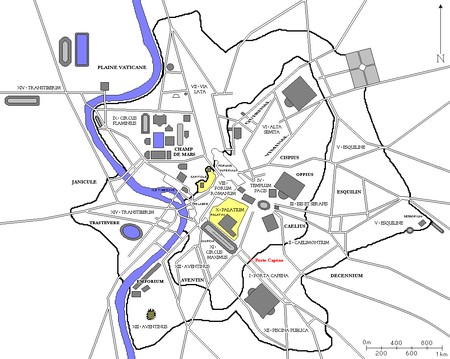Porta Capena
Ancient Roman buildings and structures in RomeGates in the Servian WallRome R. XII RipaRome R. XIX CelioRome R. XXI San Saba

Porta Capena was a gate in the Servian Wall in Rome, Italy. The gate was located in the area of Piazza di Porta Capena, where the Caelian, Palatine and Aventine hills meet. Probably its exact position was between the entrance of Via di Valle delle Camene and the beginning of Via delle Terme di Caracalla (known as the "Archaeological Walk"), facing the curved side of the Circus Maximus. Nowadays Piazza di Porta Capena hosts the FAO Headquarters. Between 1937 and 2004, it was home to the obelisk of Axum.
Excerpt from the Wikipedia article Porta Capena (License: CC BY-SA 3.0, Authors, Images).Porta Capena
Via di Valle delle Camene, Rome Municipio Roma I
Geographical coordinates (GPS) Address Nearby Places Show on map
Geographical coordinates (GPS)
| Latitude | Longitude |
|---|---|
| N 41.884 ° | E 12.491 ° |
Address
Accademia Internazionale di teatro
Via di Valle delle Camene
00184 Rome, Municipio Roma I
Lazio, Italy
Open on Google Maps







